Heavy rain and waterlogged soil have forced many farmers in the northwest to house most of their cattle in an effort to protect their ground.
Farmers in Leitrim, east Sligo and parts of Donegal and Cavan have been worst affected, with large numbers of cattle indoors for weeks at this stage and eating into winter fodder reserves. Farmers in Mayo, Galway, Longford and Roscommon and further south in Clare have also been badly hit by rain.
Their plight is highlighted by Met Éireann rainfall figures for June, July and August, which show a huge difference in rainfall across the country.
On 22 August, Malin Head in Donegal received more rain in six hours than Meath received in the entire month of August, while Mayo had more than 21 wet days in each of the summer months.
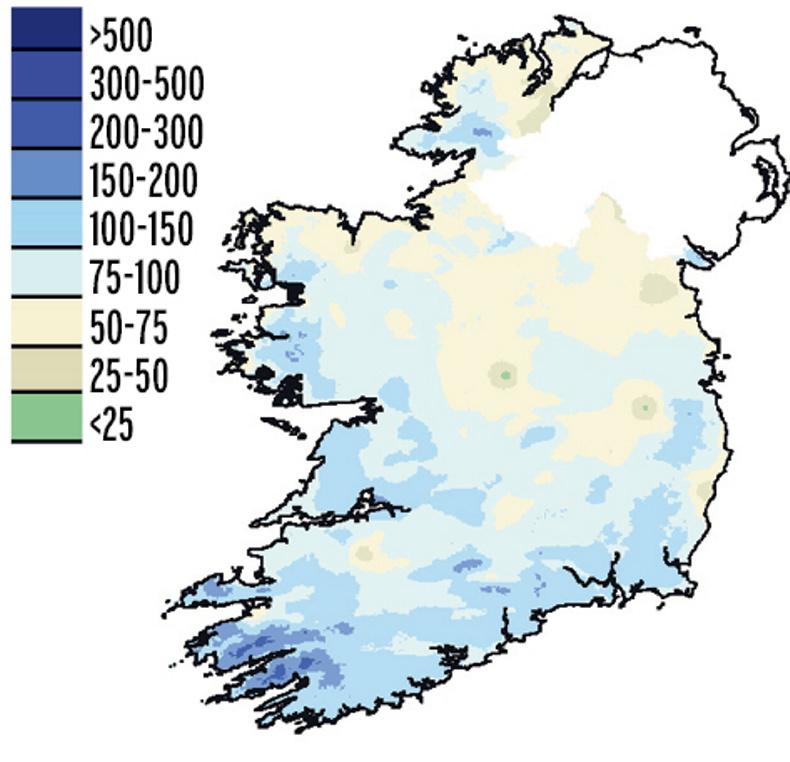
June
Rainfall totals were above the long-term average in June. The number of wet days ranged from 12 at Oak Park Carlow to 21 days at Newport in Mayo.
While the number of very wet days ranged from zero days at Finner, Co Donegal, to six at Valentia Observatory, Co Kerry.
Lowest rainfall total: Finner, Co Donegal, 63mm.
Highest rainfall total: Cahersiveen, Co Kerry, 141.55mm.
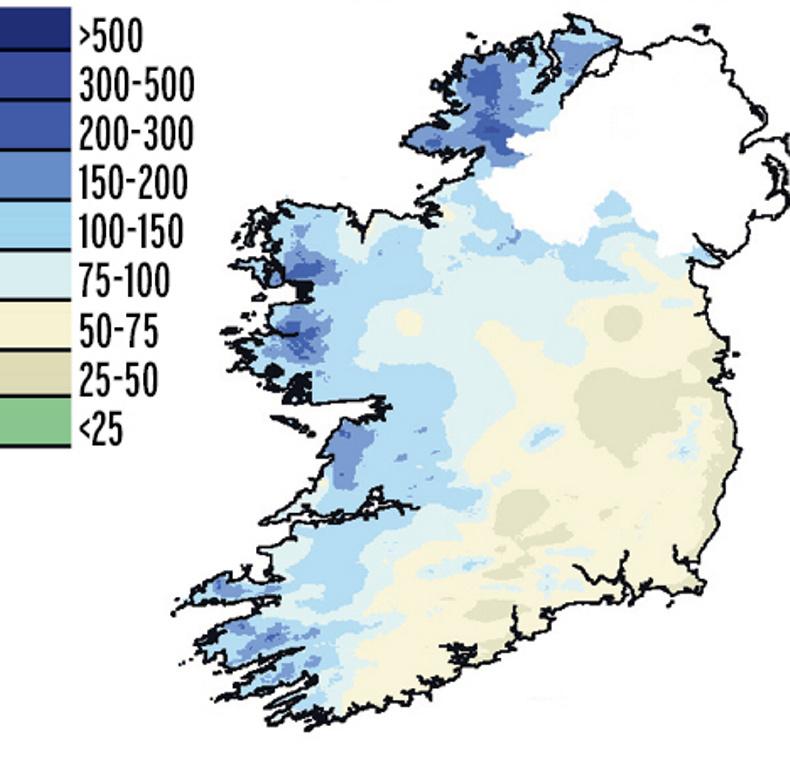
July
July rainfall was again above the long-term average. The wettest day in Shannon Airport in 71 years was recorded on 21 July, when 42.6mm of rain fell. The number of wet days ranged from nine days at Johnstown Castle, Co Wexford, to 21 days at Knock Airport, Co Mayo. The number of extremely wet days ranged from none at Dublin Airport to six days at Newport, Co Mayo.
Lowest rainfall total: Dublin Airport, 42.33mm
Highest rainfall total: Newport, Co Mayo, 164mm
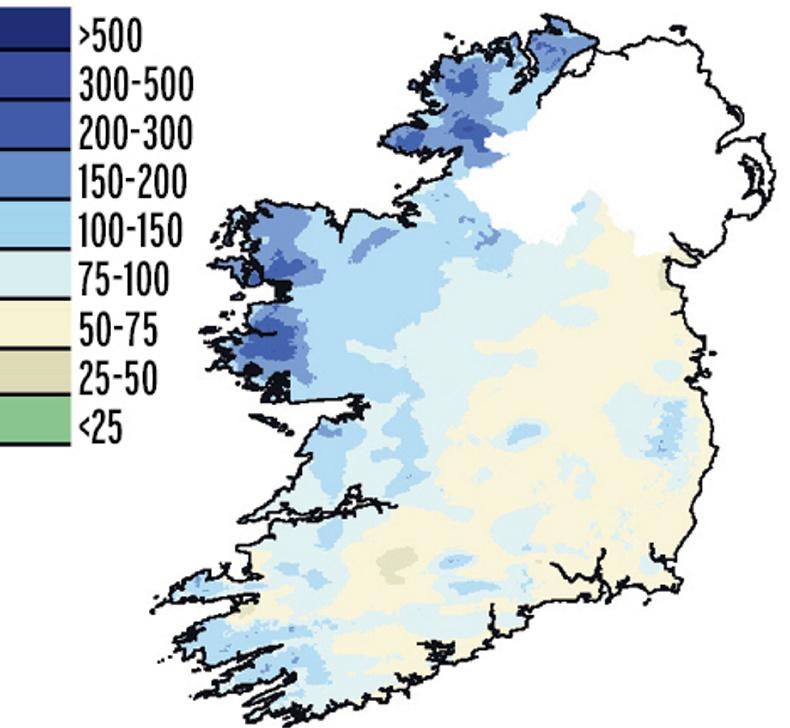
August
Malin Head in Donegal received more rainfall on 22 August (77.2mm) than Dunsany in Co Meath received for the whole month of August. The number of wet days in August ranged from nine in Dublin to 24 in parts of Mayo.
Lowest rainfall total: Dunsany, Co Meath, 61mm
Highest rainfall total: Newport, Co Mayo, 199.2mm
On the ground: case studies

Niall Patterson, suckler farmer, Carrigallen, Co Leitrim
“We have only six sucklers and eight dry cows out, with everything else housed. We have some cattle housed for about three weeks now. I put 20 cows and calves in temporarily and now I can’t see them getting back out. Grass growth has slowed down a great deal and we are struggling to get fertiliser out at the minute with all the rain. We were very lucky to get our second-cut silage done last weekend in reasonable conditions. We are creep feeding all calves, with calves that are housed averaging 1.4kg/day compared to calves outside that are averaging 0.65kg/day.”
Joe Lernihan, suckler farmer,
Kilmihil, Co Clare
“Three weeks ago we weaned all the heifer weanlings and had to house all their mothers due to terrible ground conditions. We have since let some of them out but there are currently six still left in along with the stock bull.
“I was lucky I have some high ground that is reasonably dry and hadn’t to house the cows with the bull calves also. Some parts of the low-lying ground were completely submerged in water a few weeks ago and it is doubtful that we will get a chance to graze them paddocks again this year.”
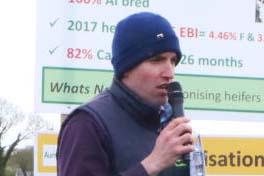
Damien Reynolds, suckler farmer, Mohill, Co Leitrim
“I have around 50% of the cattle in, with all of the cows currently housed with younger stock out.
“The weather has been nearly as bad as it ever was this year. This has been especially damaging as it has come on top of a bad year last year. Ground around here hasn’t really got the chance to recover and some of the tracks that were made last year are still present. June and the first half of July were good months but it has gone downhill since then. Groups of cattle outside are being kept in small numbers and being moved every day or second day to prevent poaching.”
Brendan Garry, Teagasc dairy
adviser, Ballina, Co Mayo
“Ground conditions had been improving nicely, with stock out on the majority of farms full-time. However, about 20mm of rain fell since Saturday lunchtime and in a few cases cows were housed over the weekend.
“Speaking to some dairy farmers this morning, cows are struggling to clean out paddocks at night as pre-grazing covers are reaching close to 1,800-2,000kg DM/ha. Some are expecting to house cows by night in the coming days as there is approximately 10mm of rain predicted late Thursday/early Friday.
“The weather has delayed some reseeding projects but they are still hopeful of getting the work completed by mid-September. However, in general Mayo has definitely escaped the worst in recent weeks.”
Heavy rain and waterlogged soil have forced many farmers in the northwest to house most of their cattle in an effort to protect their ground.
Farmers in Leitrim, east Sligo and parts of Donegal and Cavan have been worst affected, with large numbers of cattle indoors for weeks at this stage and eating into winter fodder reserves. Farmers in Mayo, Galway, Longford and Roscommon and further south in Clare have also been badly hit by rain.
Their plight is highlighted by Met Éireann rainfall figures for June, July and August, which show a huge difference in rainfall across the country.
On 22 August, Malin Head in Donegal received more rain in six hours than Meath received in the entire month of August, while Mayo had more than 21 wet days in each of the summer months.

June
Rainfall totals were above the long-term average in June. The number of wet days ranged from 12 at Oak Park Carlow to 21 days at Newport in Mayo.
While the number of very wet days ranged from zero days at Finner, Co Donegal, to six at Valentia Observatory, Co Kerry.
Lowest rainfall total: Finner, Co Donegal, 63mm.
Highest rainfall total: Cahersiveen, Co Kerry, 141.55mm.

July
July rainfall was again above the long-term average. The wettest day in Shannon Airport in 71 years was recorded on 21 July, when 42.6mm of rain fell. The number of wet days ranged from nine days at Johnstown Castle, Co Wexford, to 21 days at Knock Airport, Co Mayo. The number of extremely wet days ranged from none at Dublin Airport to six days at Newport, Co Mayo.
Lowest rainfall total: Dublin Airport, 42.33mm
Highest rainfall total: Newport, Co Mayo, 164mm

August
Malin Head in Donegal received more rainfall on 22 August (77.2mm) than Dunsany in Co Meath received for the whole month of August. The number of wet days in August ranged from nine in Dublin to 24 in parts of Mayo.
Lowest rainfall total: Dunsany, Co Meath, 61mm
Highest rainfall total: Newport, Co Mayo, 199.2mm
On the ground: case studies

Niall Patterson, suckler farmer, Carrigallen, Co Leitrim
“We have only six sucklers and eight dry cows out, with everything else housed. We have some cattle housed for about three weeks now. I put 20 cows and calves in temporarily and now I can’t see them getting back out. Grass growth has slowed down a great deal and we are struggling to get fertiliser out at the minute with all the rain. We were very lucky to get our second-cut silage done last weekend in reasonable conditions. We are creep feeding all calves, with calves that are housed averaging 1.4kg/day compared to calves outside that are averaging 0.65kg/day.”
Joe Lernihan, suckler farmer,
Kilmihil, Co Clare
“Three weeks ago we weaned all the heifer weanlings and had to house all their mothers due to terrible ground conditions. We have since let some of them out but there are currently six still left in along with the stock bull.
“I was lucky I have some high ground that is reasonably dry and hadn’t to house the cows with the bull calves also. Some parts of the low-lying ground were completely submerged in water a few weeks ago and it is doubtful that we will get a chance to graze them paddocks again this year.”

Damien Reynolds, suckler farmer, Mohill, Co Leitrim
“I have around 50% of the cattle in, with all of the cows currently housed with younger stock out.
“The weather has been nearly as bad as it ever was this year. This has been especially damaging as it has come on top of a bad year last year. Ground around here hasn’t really got the chance to recover and some of the tracks that were made last year are still present. June and the first half of July were good months but it has gone downhill since then. Groups of cattle outside are being kept in small numbers and being moved every day or second day to prevent poaching.”
Brendan Garry, Teagasc dairy
adviser, Ballina, Co Mayo
“Ground conditions had been improving nicely, with stock out on the majority of farms full-time. However, about 20mm of rain fell since Saturday lunchtime and in a few cases cows were housed over the weekend.
“Speaking to some dairy farmers this morning, cows are struggling to clean out paddocks at night as pre-grazing covers are reaching close to 1,800-2,000kg DM/ha. Some are expecting to house cows by night in the coming days as there is approximately 10mm of rain predicted late Thursday/early Friday.
“The weather has delayed some reseeding projects but they are still hopeful of getting the work completed by mid-September. However, in general Mayo has definitely escaped the worst in recent weeks.”














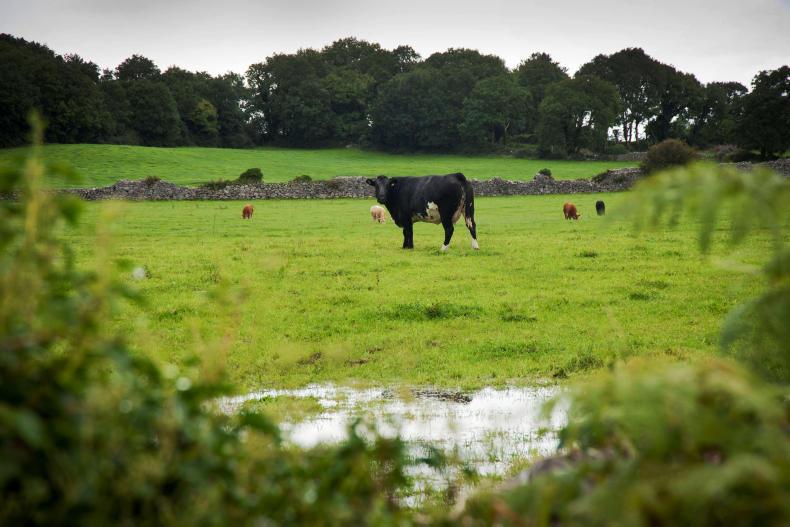
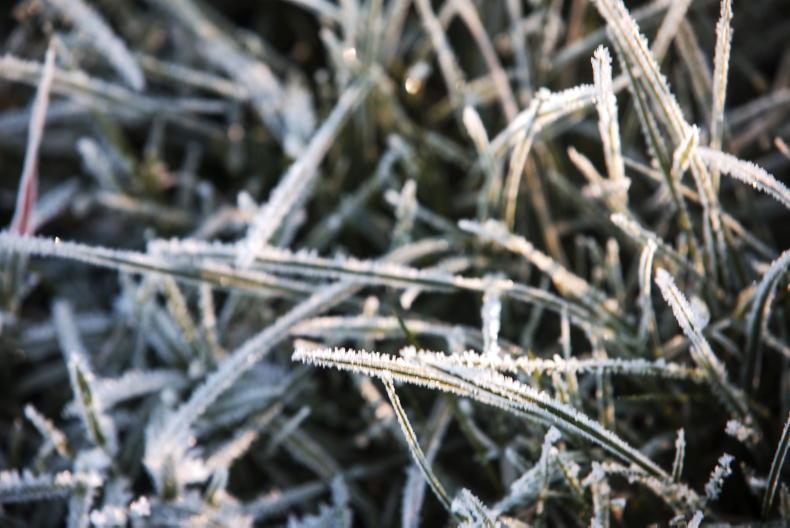
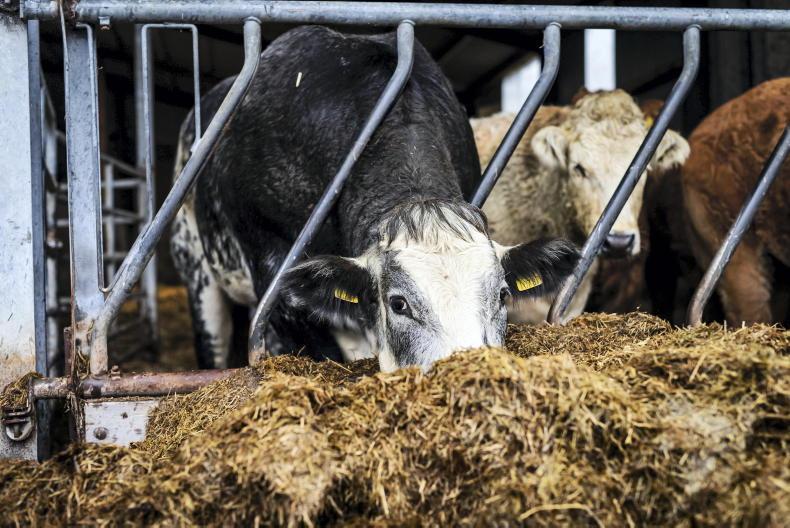
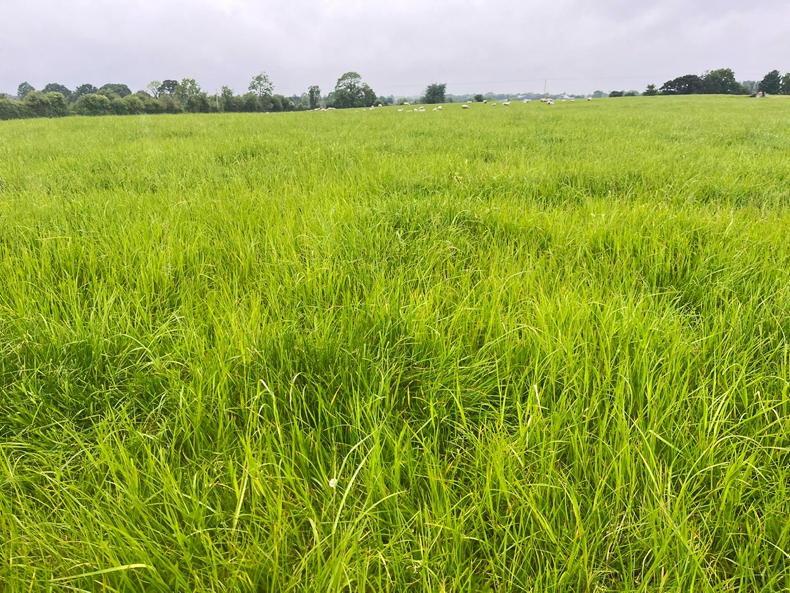
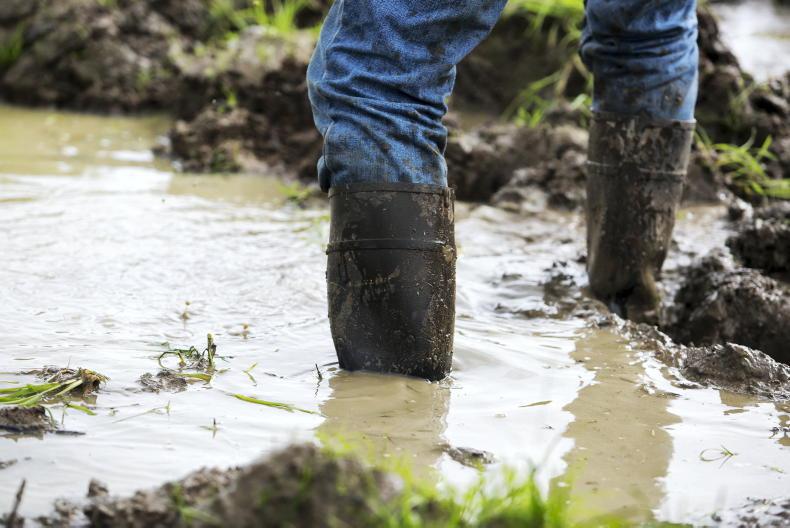
SHARING OPTIONS